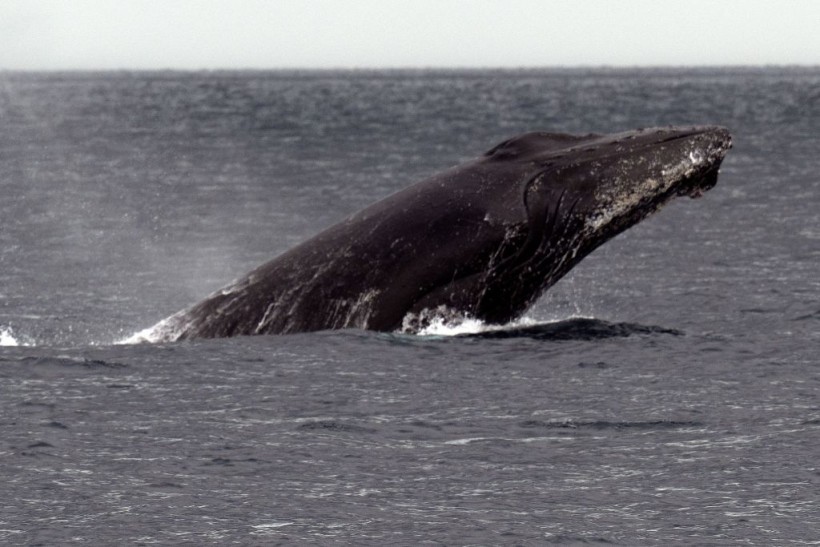Toothed whales and dolphins are among the most remarkable animals on the planet. They can navigate and hunt in the dark using sound waves, a skill known as echolocation or biosonar. But how did they evolve this ability, and what factors shaped their echolocation signals?
A new study published in Diversity provides new insight into how toothed whales and dolphins came to use echolocation.
The researchers compared the echolocation signals of two species of toothed whales that inhabit the same mangrove forest in Bangladesh: the Ganges river dolphin, an exclusively riverine species that belongs to the Platanistidae family, and the Irrawaddy, a freshwater toothed whale from the dolphin family that lives in both coastal and riverine habitats.
The study found that the Ganges river dolphin produces echolocation signals at very low sound intensities and frequencies compared to the Irrawaddy and other marine dolphins.
The researchers suggested that this may reflect the ancient origin of the Ganges river dolphin, which diverged from other toothed whales about 30 million years ago, making it one of the oldest species of aquatic mammals that use echolocation.
The study also suggests that echolocation in toothed whales initially evolved as a short, broadband and low-frequent click.
As dolphins and other toothed whales evolved in the open ocean, the need to detect schools of fish or other prey items quickly favored a long-distance biosonar system that used higher sound intensities and frequencies.
The challenges of echolocation in different environments
 (Photo : LUIS ACOSTA/AFP via Getty Images)
(Photo : LUIS ACOSTA/AFP via Getty Images)

The environment that freshwater dolphins operate in poses very different challenges to a biosonar than the vast expanses of the sea where most dolphins later evolved.
River dolphins must find their food, often small fish or crustaceans, in highly turbid water where visibility seldom exceeds a few inches.
They also have to deal with complex acoustic clutter from vegetation, rocks, and other obstacles.
To cope with these challenges, river dolphins have adapted their echolocation signals in various ways. For example, the Ganges river dolphin uses low-intensity and low-frequency clicks that are less likely to be reflected or scattered by the water and the surroundings.
The Irrawaddy, on the other hand, uses higher-intensity and higher-frequency clicks that are more effective for detecting small prey items in the water column.
Another adaptation that river dolphins have is the ability to rapidly adjust their clicking rate as they track their prey.
They can emit as many as 500 clicks per second while in hot pursuit, and respond to sudden changes in the position of their prey in as little as 50 to 200 milliseconds by adapting their clicking rate.
This shows that echolocating whales' brains respond at speeds comparable to visual predators as they target their prey.
The implications for conservation and evolution
The study of echolocation in toothed whales not only reveals new clues about how they evolved their amazing abilities, but also has potential implications for their conservation and survival.
Many whale populations are shrinking, which has led to efforts to protect them in the wild. Knowing what conditions allow these animals to thrive will make conservation efforts more effective.
For example, noise from ships and other human activities may interfere with the ability of whales to hunt using echolocation.
This may be especially problematic for river dolphins, which live in close proximity to human settlements and activities.
Understanding how different echolocation signals are affected by noise may help to design mitigation measures to reduce the impact of noise on these vulnerable animals.
Moreover, the study of echolocation in toothed whales may also shed light on the evolution of other sensory systems in animals.
For instance, some toothed whales have developed asymmetric skulls to accommodate the soft tissues that help them to echolocate.
This suggests that echolocation may have influenced the shape and structure of their heads, as well as their brains.
Comparing the echolocation signals and skull morphology of different toothed whales may reveal how they adapted to different ecological niches and environments over millions of years.
Echolocation is a fascinating and complex phenomenon that has enabled toothed whales and dolphins to conquer the underwater world.
By studying their echolocation signals, we can learn more about their biology, ecology, and evolution, and also appreciate their diversity and beauty.
Related article: Blue Whale Earwax Reveals History into Whale, Ocean Health
© 2024 NatureWorldNews.com All rights reserved. Do not reproduce without permission.





